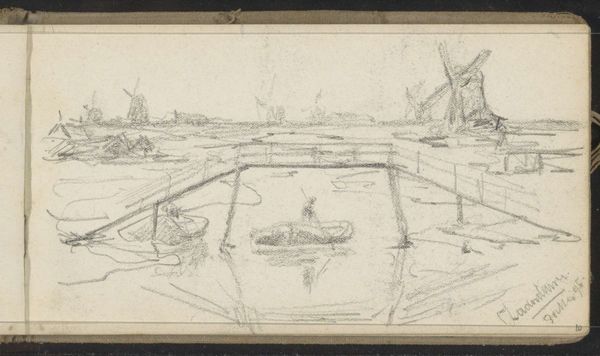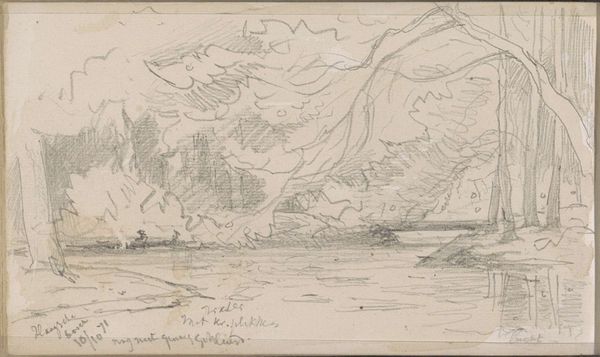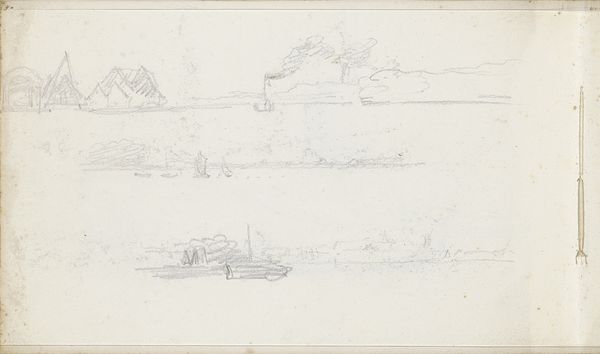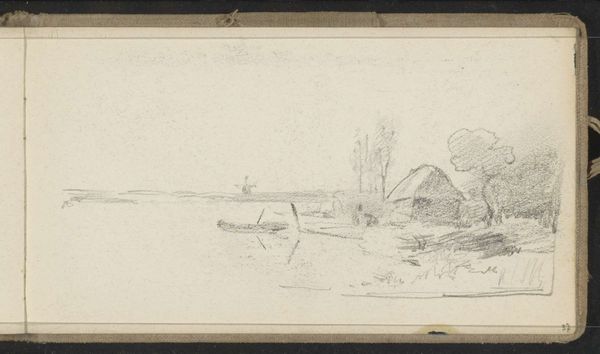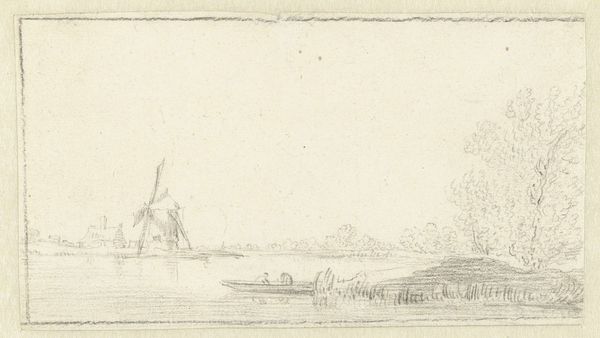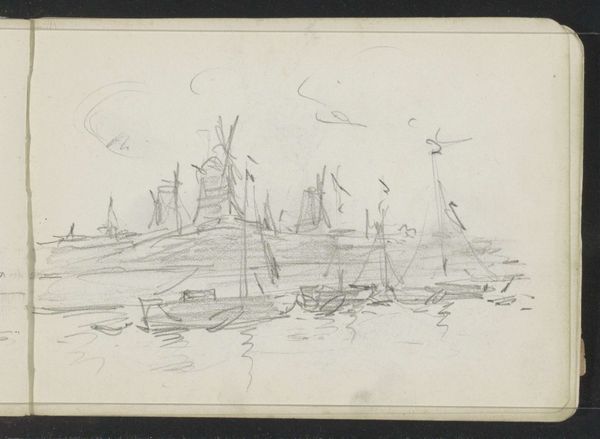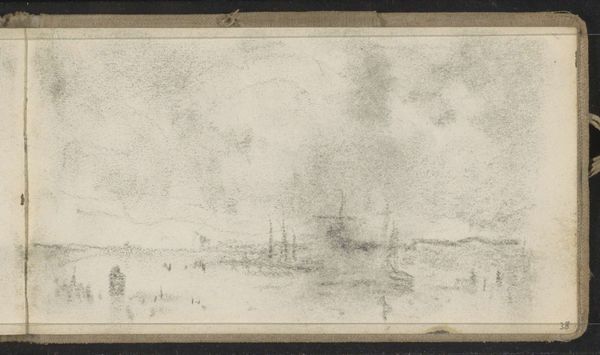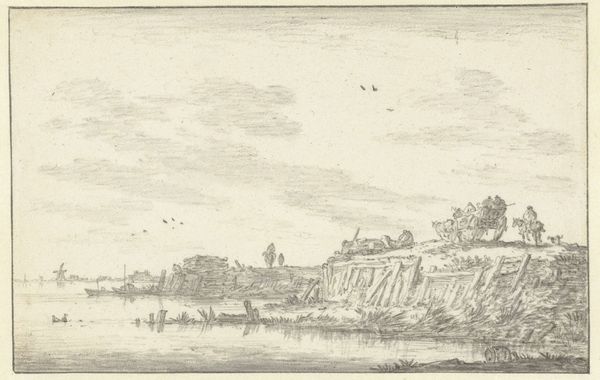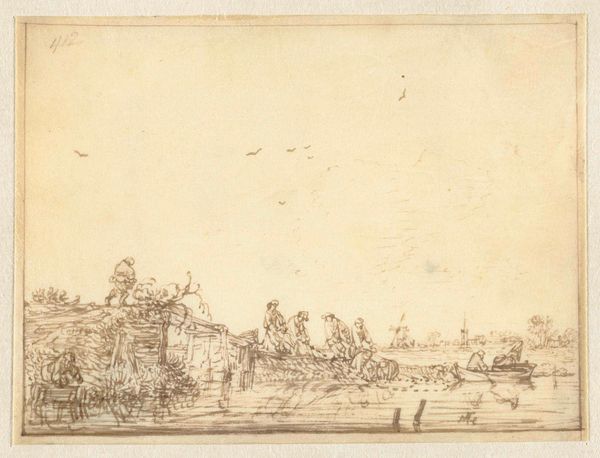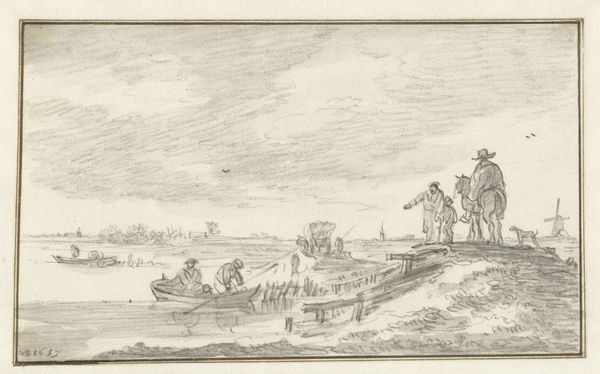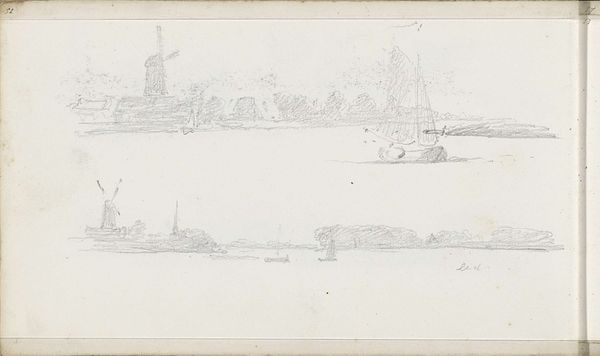
drawing, paper, pencil
#
tree
#
drawing
#
toned paper
#
quirky sketch
#
dutch-golden-age
#
pen sketch
#
sketch book
#
landscape
#
paper
#
personal sketchbook
#
sketchwork
#
pen-ink sketch
#
pencil
#
pen work
#
sketchbook drawing
#
sketchbook art
Dimensions: height 104 mm, width 179 mm
Copyright: Rijks Museum: Open Domain
Editor: This is "Landschappen met molens en bomen," or "Landscapes with Mills and Trees," created around 1895 by Willem Cornelis Rip. It seems to be a sketchbook drawing using pencil, and what strikes me is how fleeting and ephemeral it feels. Like a visual diary entry. What do you see in this piece beyond that initial impression? Curator: It’s interesting you say ‘ephemeral’ because that speaks directly to the socio-political context of landscape art at the end of the 19th century. Rapid industrialization was transforming the Dutch countryside. Artists like Rip, through quick sketches like these, were engaging in a dialogue – often tinged with nostalgia – about the changing relationship between people and the land. Does this shed a different light on his choice of subject and medium? Editor: It does! Knowing that it reflects a specific societal anxiety gives the drawing more depth. I had just viewed it as an informal record, but now I wonder if there's some inherent politics in sketching windmills rather than factories at that moment. Curator: Exactly! And consider the role of art institutions in that period. Museums were actively shaping national identity, often showcasing idyllic landscapes to promote a particular vision of Dutch heritage, one that subtly resisted the disruptive forces of modernization. Would you say that art in general became then a kind of political instrument? Editor: In some cases, yes, and it also complicates things. The artist can resist or re-inscribe certain political views depending on different social environments, or cultural movements… I'm going to be pondering on this in future visits. Curator: Precisely. Context reveals the artist's perspective, how they position themselves within those debates through visual imagery. Next time, notice who has the privilege to display such landscape… what socio-economical role this implies. Editor: Okay, noted. Thanks for opening my eyes on art as a reflection on these wider topics!
Comments
No comments
Be the first to comment and join the conversation on the ultimate creative platform.
